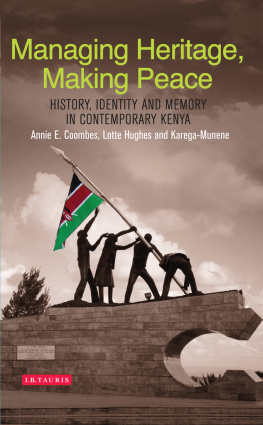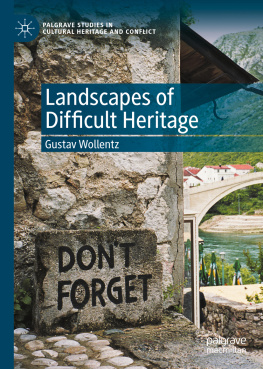The Southeastern Geographer is published by the University of North Carolina Press for the Southeastern Division of the Association of American Geographers. The quarterly journal publishes research papers on all geographic topics and regions, but the editors especially invite submissions that focus on the American South. SEDAAG WEB SITE: http://www.sedaag.org
EDITORS
David M. Cochran, Jr. & Carl A. Andy Reese
University of Southern Mississippi
BOOK REVIEW EDITOR
Jerry O. Joby Bass
University of Southern Mississippi
CARTOGRAPHIC EDITOR
George T. Raber
University of Southern Mississippi
EDITORIAL ASSISTANT
James Ewing
University of Southern Mississippi
SPANISH LANGUAGE TRANSLATOR
Luis Snchez-Ayala
Universidad de los Andes, Bogot
EDITORIAL COMMITTEE
Derek H. Alderman East Carolina University
Ling Bian State University of New York, Buffalo
Jason K. Blackburn University of Florida
Robert Brinkmann Hofstra University
Laurence W. Carstensen, Jr. Virginia Tech
Kelley Crews University of Texas
Maria G. Fadiman Florida Atlantic University
Douglas W. Gamble University of North Carolina, Wilmington
Michael E. Hodgson University of South Carolina
Sally P. Horn University of Tennessee
Russell L. Ivy Florida Atlantic University
Allan L. James University of South Carolina
Barry D. Keim Louisiana State University
Lisa M. Kennedy Virginia Tech University
Soren C. Larsen University of Missouri
Scott A. Lecce East Carolina University
Jonathan I. Leib Old Dominion University
Kent Mathewson Louisiana State University
Klaus J. Meyer-Arendt University of West Florida
Tyrel G. Moore University of North Carolina, Charlotte
John T. Morgan Emory and Henry College
Keith R. Mountain University of Louisville
Leslie A. North Western Kentucky University
Kavita Pandit University of Georgia
John Pickles University of North Carolina, Chapel Hill
Craig S. Revels Central Washington University
John C. Rodgers Mississippi State University
David Shankman University of Alabama
Graham A. Tobin University of South Florida
Front cover image: This photograph was taken on September 11, 2011 at the mule-pull competition at the annual Mississippi Pecan Festival in Richton, Mississippi. A popular event at the festival, this competition highlights the mule as an historic symbol of the rural American South. Photo by Joseph S. Miller.
2012 Southeastern Division of the Association of American Geographers.
This publication is printed on 30% recycled, acid-free paper.
Contents
PART I: PAPERS
PART II: GEOGRAPHICAL NOTES
PART III: REVIEWS
SUBSCRIPTION INFORMATION
Members of the Southeastern Division of the Association of American Geographers receive the Southeastern Geographer as part of their annual dues ($40 per single; $42 per couple; $20 per student and retiree). The subscription rate for non-member individuals in the United States is $40 per year, and $72 per year outside the U.S. The rate for U.S. institutions is $49 per year, and $81 for institutions outside the U.S.
SUGGESTIONS FOR CONTRIBUTORS
The Southeastern Geographer welcomes manuscripts on any geographical subject as long as they reflect sound scholarship and contain significant contributions to geographical understanding. Residence and professional affiliation of the author do not affect the acceptability of a manuscript.
Guidelines for preparing manuscripts for submission are available on the World Wide Web at www.sedaag.org. All manuscripts submitted are reviewed under a double-blind system by selected members of the editorial committee and other authorities at the discretion of the editors.
Reprints may be obtained at the expense of the author. Abstracts of all articles appearing in the Southeastern Geographer are submitted for inclusion in GeoAbstracts, an international publication. Full text versions of recent articles are available online by subscription through Project Muse (http://muse.jhu.edu). Issues in 2012 will also be available as an eBook through Amazon, Sony, or Barnes and Noble.
All requests for subscriptions, back issues, and address changes should be mailed to Journals Department, University of North Carolina Press, 116 South Boundary Street, Chapel Hill, NC 27514.
Email manuscripts to:
David Cochran and Andy Reese
Co-Editors, Southeastern Geographer
Department of Geography and Geology
University of Southern Mississippi
118 College Dr., Box 5051
Hattiesburg, MS 39406
segeditors@gmail.com
COVER ART
The Mule Pull at the Mississippi Pecan Festival
JOSEPH S. MILLER
The University of Southern Mississippi
This photograph was taken on September 24, 2011 at the Mississippi Pecan Festival during the festivals mule pull competition. The Mississippi Mule Pullers Association hosts the annual competition at the Pecan Festival, which is currently in its 25 th year in Richton, Mississippi. It features around twenty teams of mules from across the state. The rules of the event are simple: heavy weights are loaded onto a sled, and as soon as the team of mules is attached to the sled and commanded by their teamster to pull, they have three tries to pull the weight a certain distance. The team that can pull the most weight within its division is the winner. As a cover image of the Southeastern Geographer, the image represents the mule as a forgotten symbol of the Southeast, but it also shows the respect that a crowd of 4,000 spectators had on this day for these four-legged champions of the Southern farm.
The mythology of the mule has been built upon stories of poverty and strenuous work (Arnold 2008). Bred between a male donkey and a female horse, the mule has been continuously bred on account of their hybrid vigor that produces the endurance that outweighs similar work animals. Although the mule is known for its stubborn attitude, it has been a top choice for Southern farmers using plows and wagons because it can endure the blistering heat of the American South. The mule was also perfect for working cotton and tobacco crops, thus contributing to their wide distribution across the region (Arnold 2008). The mule was less likely to stomp on plants between small rows of cotton and tobacco (Garrett 1990).
While the mule might be considered a symbol of the American South, their historic predominance in the region contrasts with a preference for horses elsewhere in the country. Scholars have offered several explanations for this preference. One possibility is that horses feet are better suited for the hard pavement of streets in cities of the Northeast. Another reason might be that some European immigrant groups were prejudiced against the mule as a result of the mules historic scarcity in certain regions of Europe (Leighton 1967; Garrett 1990).
As tractors began to be widely used in the 20 th century, the mule lost its dominance on Southern farms. The mule pull of the Mississippi Pecan Festival is a reminder of the strength and skill of the mules. Not only do spectators enjoy the event, the teamsters often acknowledge the life lessons they have learned through working with mules. I had an old pair of mules when I just started, and they knew more about pulling than I did, said teamster and ex-president of the Mississippi Mule Puller Association, Marion Bentley (Bentley 2012). They will teach you how to pull.









